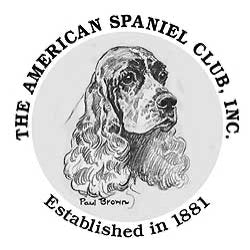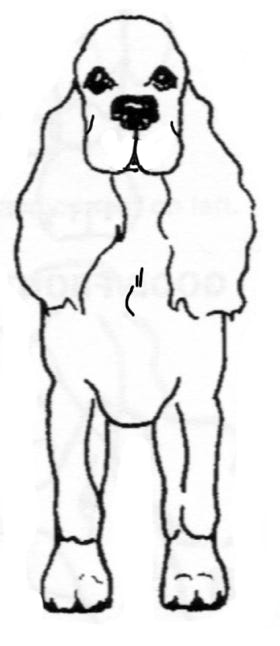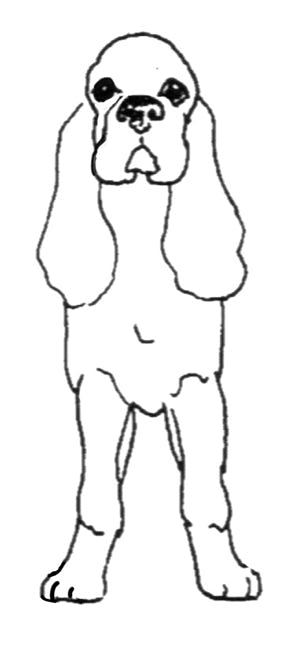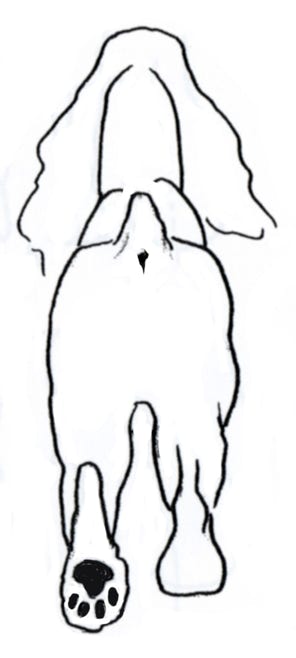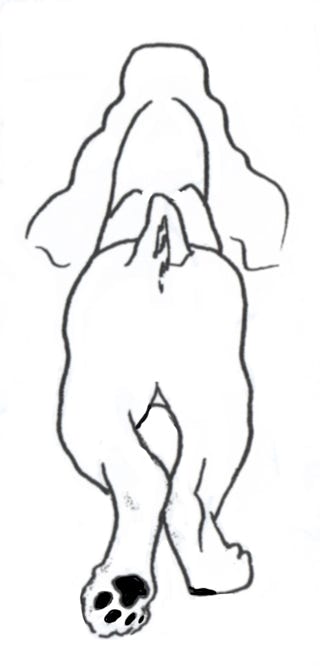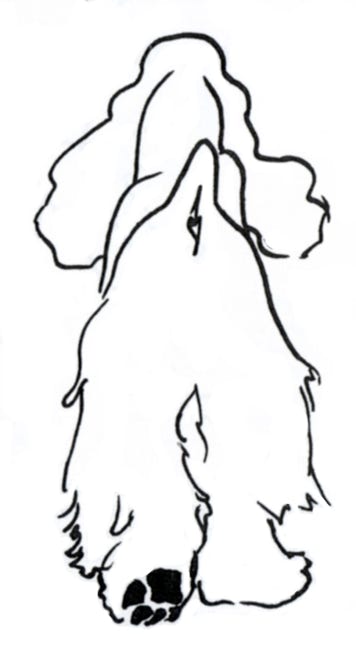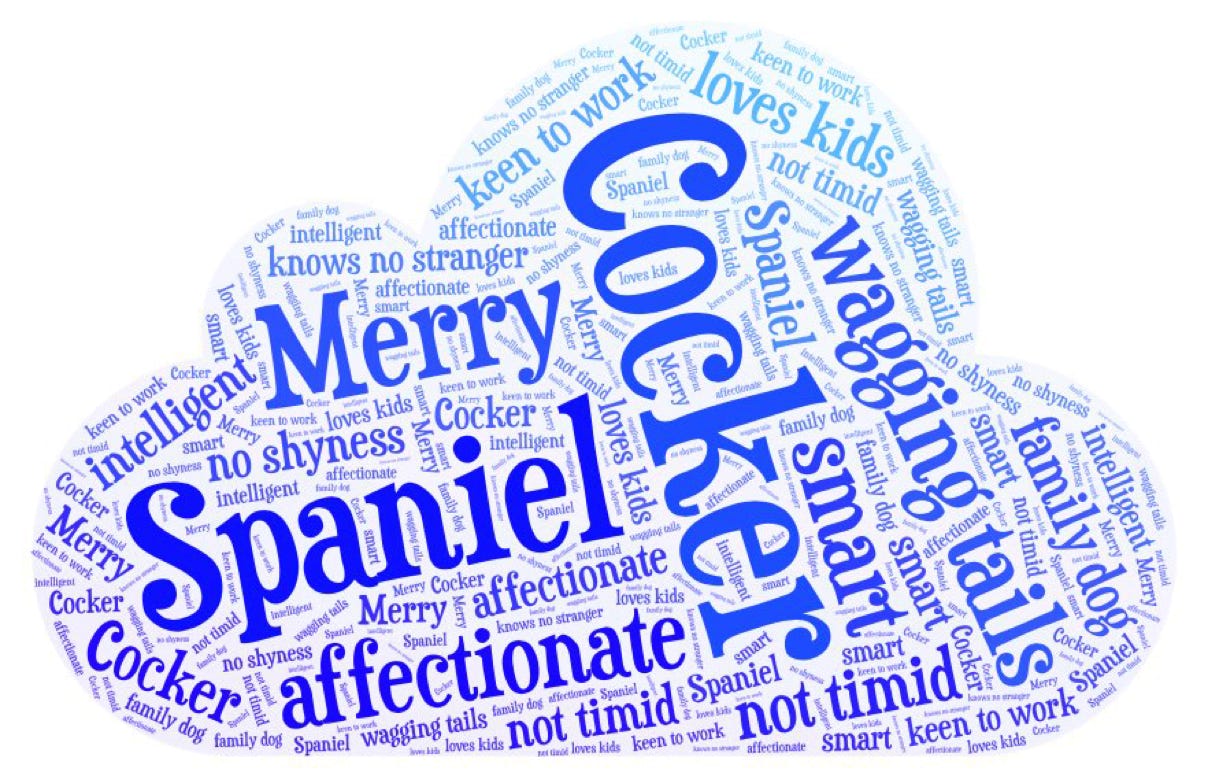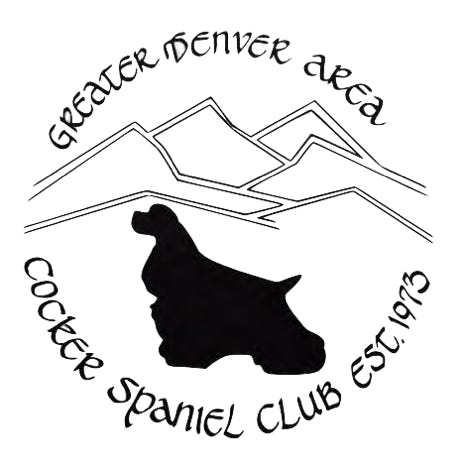

Greater Denver Area Cocker Spaniel Club
Helping Breeders, Exhibitors & Judges
Understand Cocker Structure & Movement

Seeing Movement Beyond the Coat
The un-retouched photo above is CH Kamp’s Kaptian Kool.
He was a Multiple All-Breed Best in Show and ASC Best in Show winner in the late 1970’s - early 1980’s. He is one of the best moving Cockers of our modern era. He is an excellent example of breed type and movement.
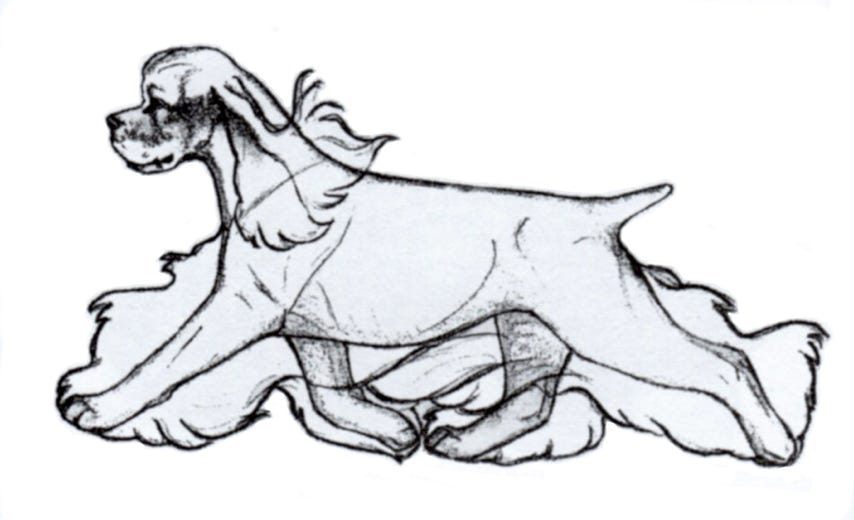
The type of movement we are talking about is more than “flash and dash,” or how fast your dog moves around the show ring. Outstanding movement is based on proper structure. How your dog is built determines his stride. Proper structure allows a dog to go the distance with less effort and gives him improved shock absorbency in athletic activities such as Agility and hunting. Good structure enables him to remain sound throughout his lifetime. While the Breed Standard gives lists of traits and attributes of the breed, we will highlight some of these with visual examples.

“The more you know, the more you realize how much you don’t know.
The less you know, the more you think you know.”
-David Freeman

Proportion -the relationship between height & length.
Height - Is measured from the highest point of the shoulder (A) to the ground (B).
Length -Is described as being from the point of the shoulder (C) to the point of the hip (D).
Correct proportion is described as: the dog’s length is slightly longer than its height which gives the Cocker balance and symmetry.
Often you will hear breeders say that a particular dog is “up on leg.” This is not referring to how tall a dog is, but a reference to the correct proportions of height and length. Likewise a dog who is called “long and low” is lower in height at the shoulder in proportion to its length .


Common Structural Faults
Correct Structure
A. Neck - Short, lacking arch.
B. Shoulder Layback - Steep, should not be bulky/wide.
C. Top-line - Soft, has a dip at the center, may flex when moving, high in the rear.
D. Hip - The bone is tipped at a greater angle giving the dog a low tail set. This also shortens the rear stride.
E. Tail Set - Low.
F. Rear Angulation -Straight, poorly angled, (120 degrees). He has swinging, stiff and inflexible action instead of a driving action.
G. Angle of the shoulder blade & upper arm is too large (120+ degrees).
H. Upper arm - Short, straight.
I. Fore-chest - Breast bone is recessed. Should protrude beyond the left & right points of the shoulder. No depth.
Movement - This dog will have smaller, mincing steps.
From the side his front legs will not extend to the end of its muzzle. The rear will have a swinging, motion displaying a poor top-line. The rear foot, after it strikes the ground, may continue up and back into the air (wasted action). This dog will require more steps in order to go the same distance as the dog on the right.
Neck - Long, arched.
Shoulder Layback - Smooth, well laid back at
nearly a 45 degree angle.
Top-line - Hard, sloped.
Hip - 30 degrees (flatter than many breeds), is part of a driving rear. Does not protrude.
Tail Set - Right off the back at about 45 degrees.
Rear Angulation - Well angulated (90 degrees), strong, wide. Hocks well let down.
Shoulder Blade & Upper arm - Set at about
90+ degree angle .
Upper Arm - Long, well set under upper arm is crucial to the front assembly and determines length of stride.
Fore-Chest - Breast bone protrudes beyond the left & right points of the shoulder.
Movement - This dog will have a longer stride, covering more distance in fewer steps. From the side, this dog’s front legs will extend (reach) to the end or lightly more than his muzzle. They will not appear to strike high, then slap the ground. His rear foot will stay on the ground (for the full stride) and propel (drive) the dog forward with fewer strides to arrive at his destination than the dog on the left. His gait is smooth, fluid, and never bouncy.


Comment: Although a poorly built dog may be stacked on the table or down on the floor to give the appearance of correct structure, the “proof of pudding” is how it naturally stands, free stacks, and moves in the ring. Once you know the theory of movement from visual aids, you need to observe movement in real time. At future shows, stay and watch the Sporting, Working, and Herding Groups. There you will see, in real time, some outstanding movers.
Note to breeders: Evaluate your puppies and adult dogs not only on the table, but also as they gait around the yard running and playing. You can not accurately evaluate your dog’s topline or side movement by looking down on them while gaiting them on a lead.
To Help You Better Understand Structure & Balanced Movement, read
Carmen Battaglia’s article on our website titled “More Than Meets the Eye” -

